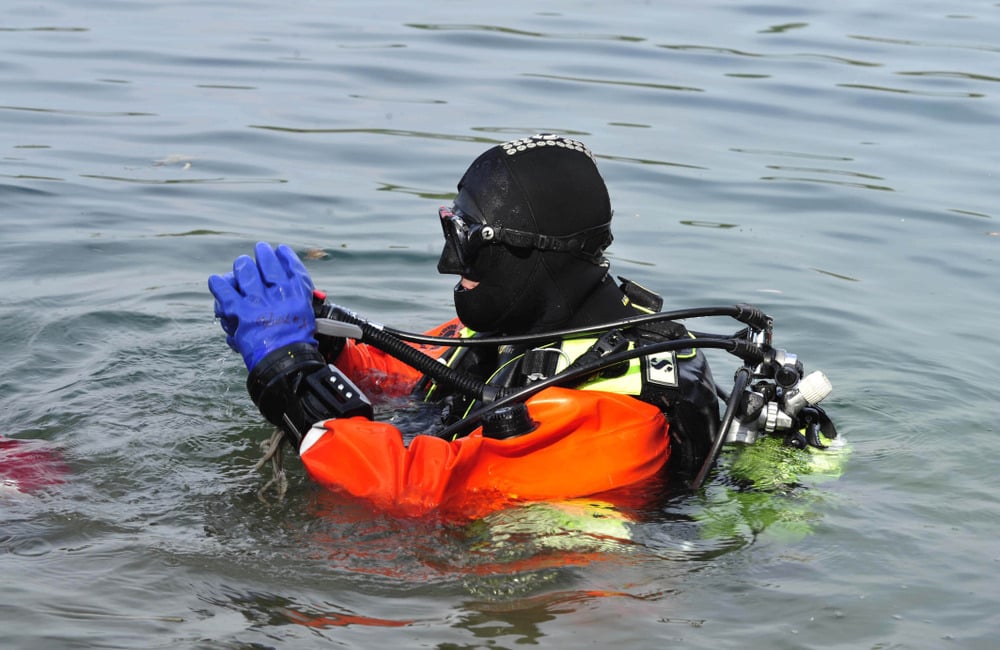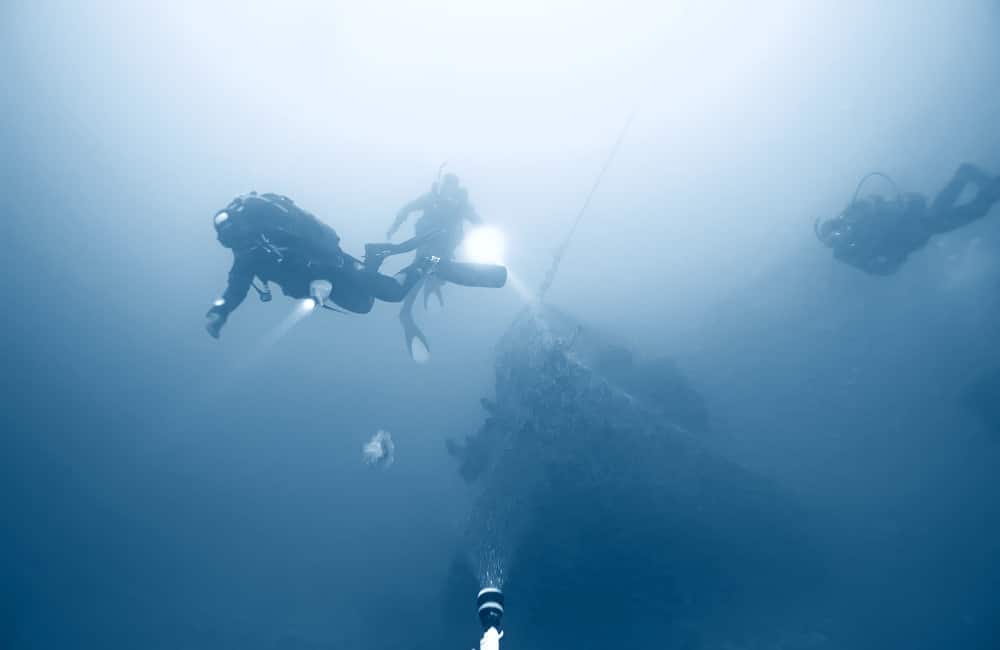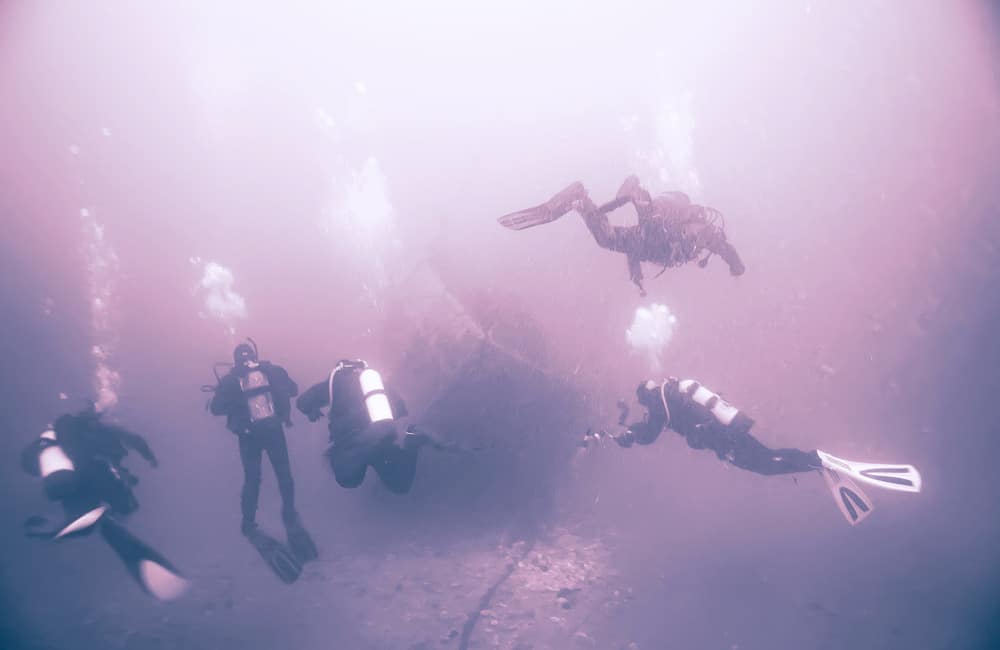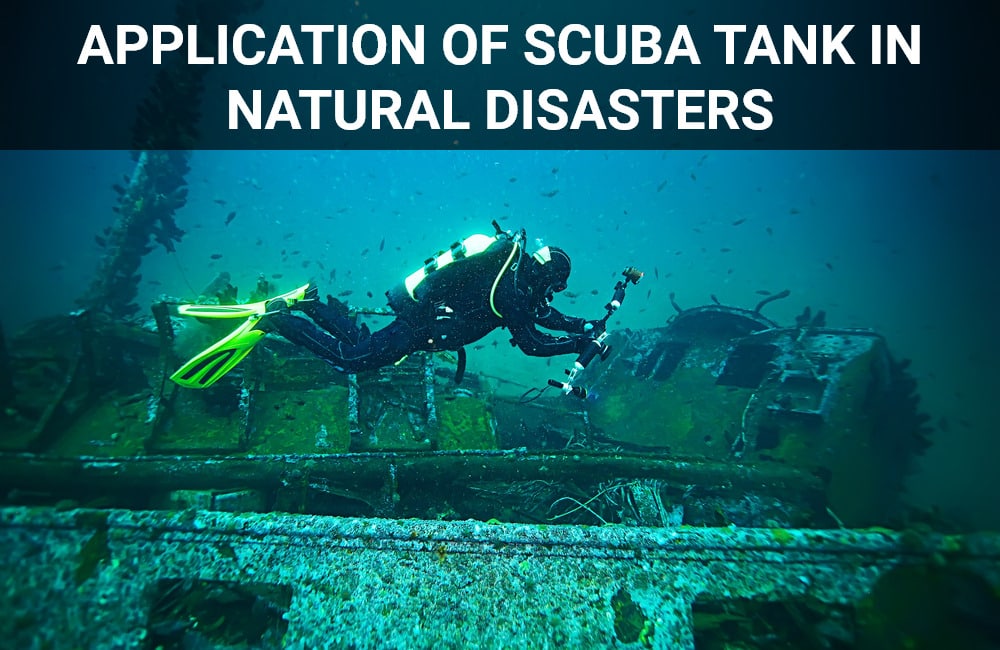During natural disasters, scuba tanks provide a vital service in ensuring people’speople’s safety if they become stranded in their homes by providing victims with a breathable environment until they can be rescued.
Scuba tanks are diving cylinders filled with compressed air, which are worn on a person’sperson’s back and used to supply air through a regulator attached to the cylinder. They enable an individual to breathe even during extreme flooding or destruction of buildings as they protect the wearer from rising water while allowing them to move freely.
The application of Scuba tanks is especially important during floods and storms when survivors can otherwise be trapped in flooded buildings. Furthermore, because scuba tanks enable access to tight spaces that would normally be difficult for rescue teams to enter, this technology can help save the lives of many people at once.
Use of Scuba Tank in Search and Rescue Operations

Following are the uses of scuba tanks in search and rescue operations:
Providing Breathing Support to Rescuers
During natural disasters, scuba tanks prove to be an invaluable resource for rescuers as they are designed to provide oxygen underwater so divers can breathe and respond quickly in aquatic environments.
Scuba tanks allow rescuers to go into affected areas using underwater vehicles such as boats, submarines, and even robotic rescue arms to search for people needing help. With a limited air supply and the ability to dive deep down, rescuers are able to find victims more efficiently in submerged buildings or ships as opposed to going hand-in-hand with conventional search teams on top of these structures.
As they offer support while underwater, scuba tanks make it possible for rescuers to save more lives during natural disasters without endangering their own well-being.
Facilitating Access to Confined Spaces
A scuba tank is an invaluable tool for helping responders reach confined spaces in natural disasters. Not only does the device provide an air source, but it also helps unlock access to otherwise blocked and difficult-to-reach areas.
Equipping emergency personnel with such tanks gives them the ability to quickly reach survivors who may be trapped under rubble or recessed within tight nooks and crannies during chaotic and dangerous situations.
As a result, scuba tanks are becoming increasingly necessary components of emergency disaster plans due to their utility in finding and rescuing people during emergency scenarios.
Enabling Longer Underwater Search Time
By attaching a scuba tank and regulator to a diving suit, rescue personnel can remain underwater for several hours amid turbulent conditions and still have the energy or focus to concentrate on their mission.
Scuba tanks also help prevent hypothermia in cold water search efforts because the divers have to spend less time resurfacing and instead stay warm with an attached insulated wet suit. In addition, with increased time underwater, various scuba accessories can be attached, such as flashlights, for better visibility.
This affords rescue personnel the ability to inspect damaged infrastructure or find missing persons in an efficient manner during a natural disaster.
Scuba Tank in Disaster Assessment and Relief Efforts

Take a look below and get to know how scuba tanks can be helpful in disaster assessment and relief efforts:
Inspecting Damage to Infrastructure
Disaster relief teams often employ a variety of investigative modalities to assess the impact of a disaster, and for those aquatic strategies, a scuba tank plays an important role. It allows personnel to venture deep underwater to evaluate damages without interfering with locals that might be fishing at the time.
Using this type of investigation technique allows relief efforts to begin earlier by giving teams an accurate understanding of structural issues occurring in submerged locations. Furthermore, using an oxygen tank ensures safety, so no personnel risks their lives during underwater investigations.
Taking this extra step before any kind of major operation means far better accuracy in repairs and assessments – minimizing the chances of further damage or harm during the relief effort.
Assessing Hazardous Substance Spills
By allowing divers to descend and investigate sites that may contain toxic materials, scuba tanks provide a unique tool for quickly determining the severity of any contamination. During emergency situations, the use of dive gear can be crucial in preventing further harm to people, wildlife, and nearby ecosystems.
These assessments also lead to faster responses and more effective cleanup solutions when hazardous chemicals have been released into the environment. With diving capabilities, first responders can gain valuable insight into potential risks that would not otherwise be available. As such, scuba tanks will continue to be an important component of disaster management initiatives worldwide.
Providing Emergency Oxygen Supply
By simply attaching regulators, tanks can become an effective source of assistance and a lifeline to survivors in reconstructing devastated communities. This has often been the case in natural disasters and other global tragedies, with scuba tanks playing an essential role in providing essential breathing and medical support.
They also help to fuel underwater vehicles used for exploration and rescue operations that are necessary for assessing damage and accelerating search and rescue activities. Without this valuable resource of compressed air, recovery strategies could come to a complete standstill or would need to be conducted through inefficient alternatives, making the presence of scuba tanks all the more important in life-saving endeavors.
Limitations of Scuba Tank in Natural Disasters

Following are the limitations and challenges of scuba tank in natural disasters:
Safety Concerns
The limitations of a scuba tank in providing sustainable oxygen during natural disasters can be a major safety concern. Apart from the tank’stank’s carrying capacity, if the tank is not properly secured, it can easily become unbalanced and therefore run out quicker than expected.
In underwater emergency situations, having access to a reliable air supply is critical for survival, so the possibility of running out before being rescued poses additional risks to those affected by floods, earthquakes, or other crises.
It is essential that rescue workers and volunteers are aware of these potential hazards so they can make sure scuba tanks are used as safely and effectively as possible during an emergency situation.
Limited Supply of Air
These tanks come with a major limitation: their capacity for air is limited. This means that if there is extensive flooding or an incident that requires multiple dives, its use could be hindered due to air shortages.
Furthermore, in certain disasters such as earthquakes, it may not be safe to fill up scuba tanks prior to the event because of the danger involved. As such, having other forms of emergency management plans in place is essential in order to mitigate the risk and keep people safe during disasters.
Dependence of Skilled Operators
One of the major limitations to using scuba tanks in natural disasters is the intense dependency they have on skilled operators. Disaster cleanup often needs to be done quickly and efficiently, yet due to the delicate nature of the hydrogen-oxygen mixes of the tanks in ensuring safety, only those with extensive knowledge of how to regulate and maintain these mixtures should be permitted to handle them.
Search and rescue teams are understandably unable to run complicated machinery during their short-term stints, which makes steps such as mixing, testing, and calibrating incomprehensible for a temporary worker – something that has been proved detrimental for multiple locations over time.
Furthermore, even if a worker becomes adept at working with the tanks after gaining experience, it is important that he/she work in accordance with stipulated guidelines and limitations so as to ensure the avoidance of any accidents and subsequent fatalities.
The Bottom Line
Overall, scuba tanks can be a valuable tool in responding to natural disasters. They provide access to areas and situations that may otherwise be impossible or too dangerous. Their ability to attach additional tools and components greatly improves their capability to respond to any given disaster situation.
In the future, we anticipate further improvements to the technology of scuba tanks; increased fuel efficiency and larger carrying capacity, combined with advancements in communication systems, will surely continue to expand their potential applications.
With more efficient use of our resources and improved technological capabilities, scuba tanks should prove important in saving lives and property as we move forward into the future of disaster management.
